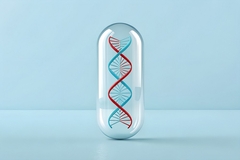New Evidence That Yeast is Best Candidate for Bioavailable Mineral Supplements

The protein-bound Zinc brought by Lalmin Zn enabled better Zinc uptake and retention by the body, while Zinc gluconate was less biologically available and even lead to a small net loss of Zinc 48 hours after ingestion of the supplement.
20/05/08 In the past months, two scientific publications have evaluated the bioavailability of Lallemand Health Ingredients premium Zinc yeast source Lalmin Zn in comparison with Zinc gluconate salts. Until now, there was no information available regarding the relative bioavailability of different forms of Zn supplement. The new results on Zn yeast are in agreement with what has already been described for Selenium yeast supplements (LalminSe). Comparative clinical study on LalminZn versus Zn gluconate bioavailability, supported by animal model results, confirms that, yeast represents an ideal vector for biologically available minerals, to which we must add a natural source of proteins and B vitamins.
The clinical evaluation conducted for healthy volunteers shows that Zinc relative bioavailability of Lalmin Zn supplement was significantly higher than of Zn gluconate supplement. The protein-bound Zinc brought by Lalmin Zn enabled better Zinc uptake and retention by the body, while Zinc gluconate was less biologically available and even lead to a small net loss of Zinc 48 hours after ingestion of the supplement.
The new clinical data on Lalmin Zn bioavailability is backed by a recent animal study following a minerals depletion/repletion scheme. This study showed a 3.7 fold increase in bioavailability for Lalmin Zn when compared to equivalent doses of gluconate Zinc. The authors based their analysis on the fact that the liver was a major storage organ for zinc. After inducing Zinc deficiency in rats by feeding them a mineral deficient diet for one month, the investigators assessed the Zinc content of the liver following one month supplementation with various doses of either Zinc yeast or Zinc gluconate. Zinc bioavailability was calculated by dose response line.
Dr Thomas Tompkins, Microbiology and Biochemistry Director for Institut Rosell/Lallemand, co-investigator in both studies, comments: “Little was known about the relative bioavailability of the different sources of Zinc, and how this may impact the clinical outcome.” He concluded: “[Our] comparative study has demonstrated the clinical relevance of the form of Zn supplement in the relative bioavailability of the mineral. [Based on this,] we recommend investigators considering clinical trials should choose supplements prepared with Zn yeast to ensure patients are retaining the mineral and that future meta-analysis of clinical studies with Zn [supplementation] should take into account the form of supplement.”
It is estimated that 25% of the world’s population could be at risk of zinc deficiency . This essential mineral is necessary for normal growth and neuropsychological development. It is essential for a well-functioning immune system and antioxidant defenses and is also involved in wound healing. Recommended Dietary Allowances for zinc depend on gender and age, as infants, children and pregnant/lactating women are at increased risk of zinc deficiency. They range from 2 (infants) to 13 mg/day (breastfeeding women), as defined by the Food and Nutrition Board of the Institute of Medicine of Washington in 2001.












